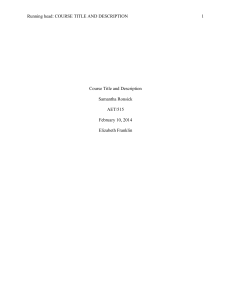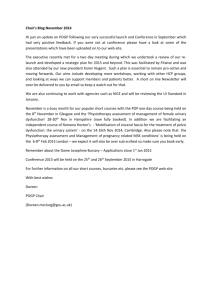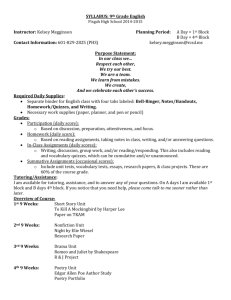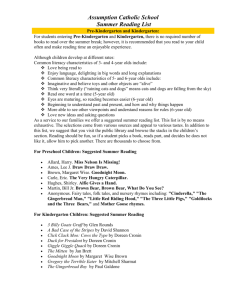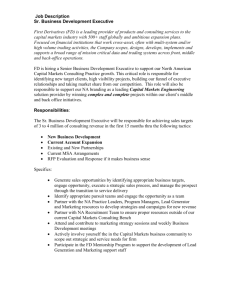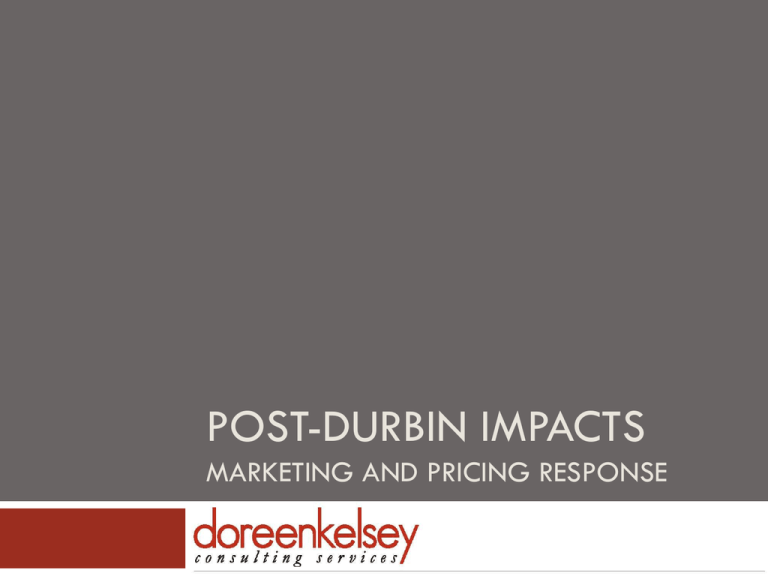
POST-DURBIN IMPACTS
MARKETING AND PRICING RESPONSE
Overview
2
Durbin Amendment positioned by Congress as
beneficial to consumers
GAO
study concluded that competition has led to
increased costs for merchants
Costs of accepting cards is passed along to consumers
Caps on issuer; not on acquirer
Merchant routing can be exclusive
Yet to see impact from multi-homing provision
Doreen Kelsey Consulting Services 2012 All Rights Reserved
Impact on merchants
3
Merchants overall benefiting from lower costs
Industry
experts expect $450 million savings this year
Signature debit transactions much less expensive
PIN debit slightly more expensive
Some merchants seeing much higher costs
$.21
cap morphed into minimum
Primarily affects small-ticket sales such as Red Box
Heartland reports average savings per merchant is
$260.24 per $100,000 in card volume
Doreen Kelsey Consulting Services 2012 All Rights Reserved
Impact on regulated institutions
4
Large banks without major credit card operations
had 40% loss in interchange in Q4 2011
BOA
lost $441million in Q4 debit revenue
Chase lost $263 million in Q4 debit revenue
Wells Fargo lost $337 million in Q4 debit revenue
U.S. Bancorp lost $58 million in Q4 debit revenue
Banks expect annual losses of $6.6 billion in debit
revenue
Banks steering customers to credit cards
Doreen Kelsey Consulting Services 2012 All Rights Reserved
Impact on exempt institutions
5
Slight increase in interchange Q4 2011
Few
tenths of one percent increase among banks
Many credit unions report similar or greater increase in
interchange
Credit unions and community banks experienced
growth in membership/customers in Q4
Increase
in checking accounts and debit cards led to
increased interchange income
But, costs increased due to higher processing costs
Doreen Kelsey Consulting Services 2012 All Rights Reserved
Impact on card associations
6
Slower growth in debit volume
Regulated
institutions promoting credit cards over debit
Unaffiliated network requirement has major
implications
Incentives offered to merchants to maintain volume
Pricing changes planned
Visa
taking lead with FANF and PAVD
Lowering APF
MasterCard taking similar approach in regard to FANF
Creating uncertainty for issuers
Doreen Kelsey Consulting Services 2012 All Rights Reserved
Outcomes
7
Regulated institutions eliminated or pared down
debit rewards
Regulated institutions increased fees on checking
and other services
Customers migrated to exempt institutions
Exempt institutions experiencing increased
interchange revenue in many cases
Merchants report no intentions to pass savings along
to consumers
Doreen Kelsey Consulting Services 2012 All Rights Reserved
Discontent all around
8
Merchants dissatisfied; threaten lawsuit
Want
certain costs removed from calculation
Claim FRB went beyond Congressional intent
Want cap restored to original proposal
FIs dissatisfied; bill initiated to repeal Durbin
Consumers dissatisfied with banks
Believe
that banks benefitted from Durbin
Perceptions based on fee increases
Doreen Kelsey Consulting Services 2012 All Rights Reserved
Fee increases
9
Regulated institutions striving to make up revenue
Extra
$20 per month per account needed
Monthly debit card fees bombed
Meant
to shift cardholders to credit and pre-paid
Shifting to less salient fees
Increasing
monthly maintenance fees on checking
Card replacement fees ($5-$20)
Remote deposit capture ($.50 per check)
Increase in NSF fees ($40)
Doreen Kelsey Consulting Services 2012 All Rights Reserved
Reliance on fee income
10
Net interest margins have sharply declined over
past two decades
Fee income increasingly important to financial
institutions’ bottom lines
Regulatory scrutiny increasingly placed on fee
income
Institutions must become more efficient and less
reliant on fee income
Doreen Kelsey Consulting Services 2012 All Rights Reserved
Emerging and continuing threats
11
Pressure from large merchants to reduce
interchange costs further
Regulations targeting credit card interchange
Regulations targeting other sources of fee income
Cards becoming obsolete
Increasing adoption of alternative payment systems
Checking accounts becoming obsolete
Assets re-pricing at today’s historically low rates
Doreen Kelsey Consulting Services 2012 All Rights Reserved
Strategic response
12
Focus on relationships
Loyalty
lessens rate and pricing sensitivity
Increases efficiency
Less reliance on back-loaded pricing model
Allows
for greater transparency
Seek non-fee sources of non-interest income
Unrelated
business income
Mortgage servicing
Insurance services
Doreen Kelsey Consulting Services 2012 All Rights Reserved
What is efficiency?
13
Leveraging investments to earn a healthy return
Managing processes, programs, and relationships to
earn revenue in excess of costs
Eliminating obsolete processes, programs or
products
Managing and improving customer/member
relationships
Cross-selling
appropriate services
Maximizing balances among services
Maximizing share of wallet
Doreen Kelsey Consulting Services 2012 All Rights Reserved
How is efficiency measured?
14
Efficiency ratios measure percentage of income
needed to cover non-interest expense
Another way to put it: how much does it cost your
organization to earn a dollar?
Lower is better with efficiency ratios
Banks’ efficiency ratios average 55%
Best performing credit unions typically have
efficiency ratios in the 60 - 70% range
Smaller credit unions often closer to 90%
Doreen Kelsey Consulting Services 2012 All Rights Reserved
Why is efficiency important?
15
Previously, earnings model based on net interest
income less operating expenses
Shrinking margins have made industry more
dependent on non-interest income
Regulatory changes and emerging payment systems
threaten to reduce non-interest income
Higher costs for compliance have increased
operating expenses
It’s time to get back to fundamentals
Doreen Kelsey Consulting Services 2012 All Rights Reserved
How not to drive efficiency
16
Focusing solely on cost reduction
Relying on price to drive product and balance
volume
Promoting product of the month
Focusing only on product profitability instead of
household profitability
Focusing only on services sold and not on balances
acquired
Doreen Kelsey Consulting Services 2012 All Rights Reserved
Calculating efficiency ratio
17
Total interest income (line115 on call report)
Plus other operating income (659)
Plus total fee income (131)
Subtotal
Less total interest expense (350)
Equals total adjusted operating income
Divide total non-interest expense (671) by total
adjusted operating income = efficiency ratio
Doreen Kelsey Consulting Services 2011 All Rights Reserved
Back-loaded pricing model
18
Relies on hyperbolic discounting
Consumers
fail to consider contingent costs
End up paying more
Banking industry examples
NSF
fee income funds free checking
Punitive fees/rates fund credit card rewards
Other industry examples
Airfares
Printers
Doreen Kelsey Consulting Services 2012 All Rights Reserved
Hyperbolic discounting
19
Major issuer offers 0% balance transfer with promo
rate effective for six months
Balance transfer fee is 4%
Post-promo rate is 7.9%
Compare to credit union offering 6.9% balance
transfers for life with no balance transfer fee
Cardholder
perceives 0% offer as more beneficial
Yet, effective APR of balance transfer is 8%
Doreen Kelsey Consulting Services 2012 All Rights Reserved
Profitability drivers
20
Drive profitability from cross-sales
Market
driven
Customer centric
Organic growth
Convenience and value drive loyalty
Benefits of high loyalty index
Rates
and fees rank #10 and #11 on a 20-part survey
Service and convenience rank #2 and #3
Doreen Kelsey Consulting Services 2012 All Rights Reserved
Benefits of free checking
21
Exemption offers competitive advantage
Use advantage to gain market share
Interchange income eventually needs to be offset
by other income
Institutions should not be quick to eliminate free
checking
Consumers
say they will switch
Many alternatives now exist
Doreen Kelsey Consulting Services 2012 All Rights Reserved
Leveraging free checking
22
Reduce overdraft fee to increase fee income
Cross-sell credit cards
Interchange
not subject to caps
Credit cards offer two revenue streams
Cross-sell additional loan products
Focus
on refinancing and balance transfers
Target small business owners not being served by
larger institutions
Assist those impacted by financial crisis
Doreen Kelsey Consulting Services 2012 All Rights Reserved
Market for balances
23
Services increase relationship
Cross-sell
services to improve loyalty
But, it’s only half the job needed
Balances increase profits
Market for balances when promoting credit cards
Consumer
debt remains at record levels
Household debt 110% of disposable income currently
In 1980 - 65% by comparison
Consumers want to deleverage, reduce cost of credit
Doreen Kelsey Consulting Services 2012 All Rights Reserved
Credit card preferences
24
Doreen Kelsey Consulting Services 2012 All Rights Reserved
Checking standalone profit
25
Free Checking
Standalone Profit
Post-Durbin
(current interest
rates)
Pre-Durbin
(current interest
rates)
Yields at
historically high
interest rates
Average balance
$2,500
$2,500
$2,500
Interest rate
0.00%
0.00%
0.00%
Replacement rate
.085%
.085%
5.00%
Net margin
.085%
.085%
5.00%
Net interest income
$2.13
$2.13
$125.00
Debit interchange
$41.76
$76.56
$76.56
Gross income
$43.89
$78.69
$201.56
Account expense
$249.00
$249.00
$249.00
Net income
<-$205.1>
<-$170.32>
<-$47.44>
Return on balance
<-8.205%>
<-6.813%>
<-1.898%>
Doreen Kelsey Consulting Services 2012 All Rights Reserved
Credit card standalone profit
26
Credit card standalone
profit
Today’s interest rates
Historically high interest
rates
Average card balance
$2,355.00
$2,355.00
Interest rate
14.00%
14.00%
Replacement rate
0.85%
5.00%
Loan loss percentage
4.98%
4.98%
Net interest margin
8.17%
4.02%
Net interest income
$192.40
$94.67
Interchange income
$65
$65
Gross income
$257.40
$159.67
Account expense
$150.00
$150.00
Net income
$107.40
$9.67
Return on balances
Doreen Kelsey Consulting4.56%
Services 2012 All Rights Reserved 0.41%
Mobile channels
27
Adoption of mobile banking accelerating
15%
of all HHs
34% of credit-driven (young, high income)
Shifting from information to transaction based
Continued foray into payments space by PayPal,
Google, Yahoo, Dwolla and more
Industry experts predict cards obsolete in 3-5 years
Checking accounts also may become obsolete
Doreen Kelsey Consulting Services 2012 All Rights Reserved
Factors driving innovation
28
Mostly about convenience
Customers only need to carry phone (not wallets)
Faster than paying with cash; moves the line
Sales tickets higher than when paying with cash
Combines touch points
Payments, shopping list and loyalty rewards
Payment method and marketing medium all in one
Saves money
Merchants avoid minimum fees on multiple, low value
transactions
Merchants will invest in systems that reduce or eliminate
interchange fees
Doreen Kelsey Consulting Services 2012 All Rights Reserved
29
Doreen Kelsey helps organizations become more
strategic and competitive.
Doreen Kelsey Consulting
P.O. Box 8483, Spokane, WA 99203-0483
(800) 716-4479 (509) 499-5223
kelseyconsulting@yahoo.com
Doreen Kelsey Consulting Services 2012 All Rights Reserved

